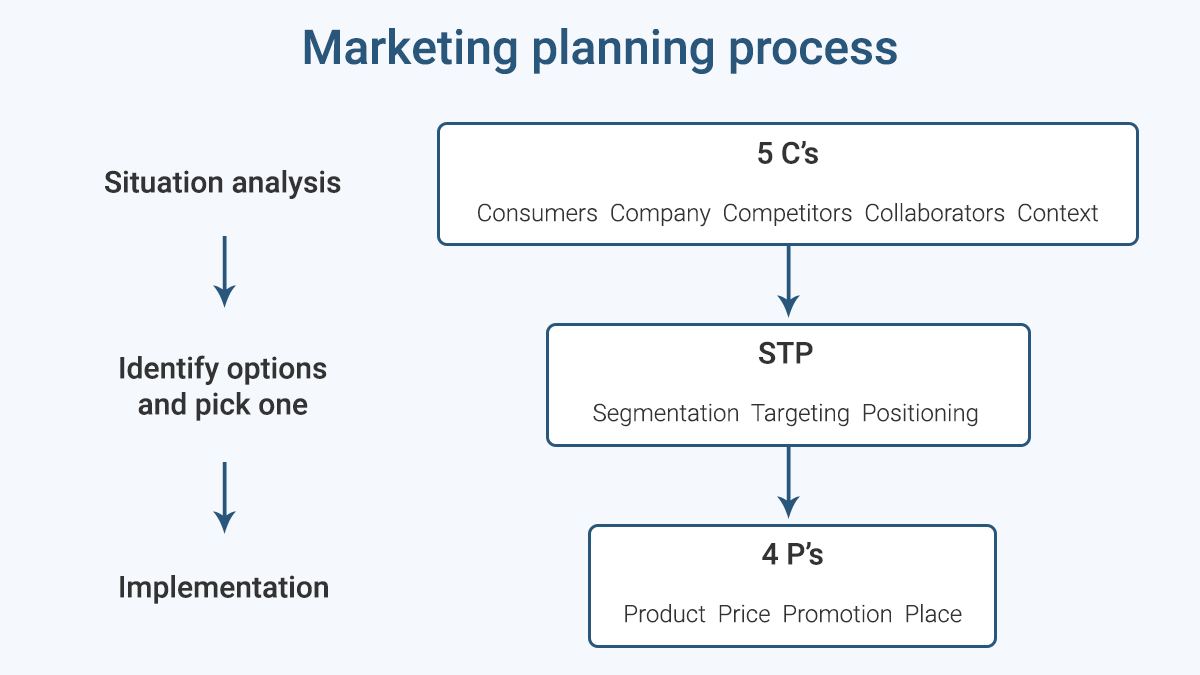Marketing is “the exchange of goods and services aimed at satisfying the needs and wants of buyers and sellers.” That’s a business school way of saying it’s marketing’s responsibility to understand your customers' needs and wants, and to make sure they’re heard by your team.
We’ll outline the marketing planning process and the basic language of marketing to help you better understand marketing’s role in the product development process.

This post is part of a four-part series that includes PR for Engineers, Product for Engineers, and Sales for Engineers.
The marketing planning process
Marketers typically use the following three-pronged approach to decision-making:
- Situation analysis: Know your landscape.
- Identify your options and pick one: Decide who your customers are.
- Implementation: Execute your plan.

The basic language of marketing
You might hear your marketer reference the 5 C’s, STP, and the 4 P’s:
- 5 C’s:
- Who are your consumers or users, and what do they need?
- What are the available resources at your company?
- Who’s your competition?
- Who are your collaborators, or who has to win for you to win?
- What’s the context, or are your users ready for this kind of product?
- STP:
- What are your different segments of users?
- How are you going to choose your target segment?
- How are you going to position your product to them?
- 4 P’s:
- What actual product, price, promotion, and placement are you going to deliver to that target segment?
These three concepts are the fundamentals of marketing, and going through the marketing planning process in this specific order can help you build better products.
Finding product/market fit
In addition to understanding the voice of the customer, marketing will help your team communicate the benefits of your products to your target segment. They might tell stories through blogs or content marketing, and raise awareness through ads or press outreach.
Some product-centric teams first decide what products or features they want to build, then ask marketing to help them sell it. Their approach might be to put the product first, even before deciding who the product is for. But on customer-centric teams, the first thing you should be thinking about is your users' needs and how to solve them.
Better technology doesn’t necessarily mean better products. After you identify the key problems you’re trying to solve and how to target the users who want your solution, then you can optimally design your product and features around meeting those needs. In other words, a more efficient approach to finding product/market fit is to make what you can sell, not sell what you can make.
